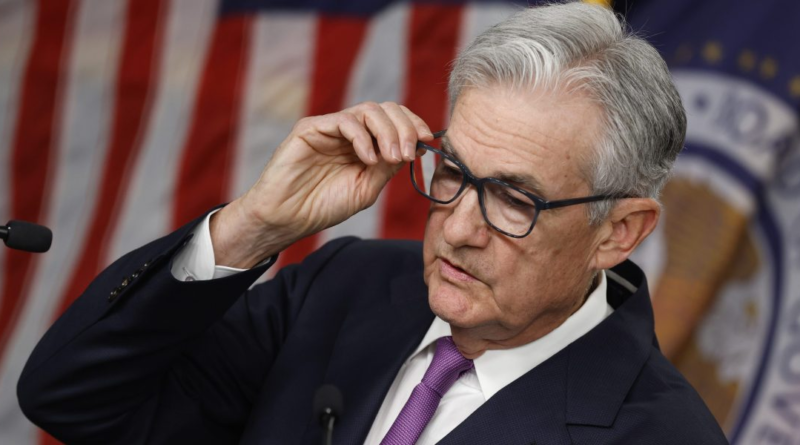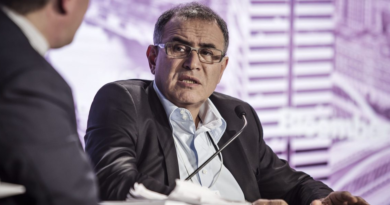Inflation, still a ways off from the Fed's 2% target, is barely budging as one economist sees a 'golden path' developing
An inflation gauge closely tracked by the Federal Reserve rose in August, boosted mainly by higher gas prices. But measures of underlying inflation slowed in the latest sign that overall price pressures are still moderating.
Friday’s report from the Commerce Department showed that prices rose 0.4% from July to August, up from just 0.2% the previous month. A 10% monthly spike in prices at the gas pump drove the increase.
Excluding volatile food and energy prices, though, “core” inflation rose by the smallest amount in nearly three years, evidence that inflation pressures continue to ease. Fed officials pay particular attention to core prices, which are considered a better gauge of where inflation might be headed. Last month’s modest rise in core inflation could raise the likelihood that the Fed will leave interest rates unchanged at its next meeting Oct. 31-Nov. 1.
Core prices edged up 0.1% from July to August, down from July’s 0.2%. It was the smallest monthly increase since November 2020. Compared with a year ago, core prices were up 3.9%, below July’s reading of 4.2%. That was the slowest such increase in two years.
In the meantime, while Americans kept spending in August, they did so at a much more modest pace. Friday’s government report showed that consumer spending, adjusted for inflation, ticked up just 0.1% after having risen 0.6% in July.
“Overall, spending remains positive and inflation is slowing, which will be welcome news to policymakers,” Rubeela Farooqi, chief U.S. economist at High Frequency Economics, said in a note to clients.
Compared with a year earlier, overall prices rose 3.5% in August, slightly higher than the 3.4% increase in July. It was the second straight rise in the year-over-year figure, which has tumbled from its 7% peak in June 2022 but still exceeds the Fed’s 2% inflation target.
The spike in gas prices is eating away at Americans’ incomes. After some solid gains last spring, inflation-adjusted incomes fell in August for a second straight month.
The combination of higher gas prices and sluggish income growth could weaken consumer spending in the months ahead. If so, it would mark a slowdown from last summer’s healthy pace of spending, which is believed to have fueled solid economic growth in the July-September quarter.
“Shrinking real disposable income is a harbinger that consumer spending will likely slow in the coming quarter,” Jeffrey Roach, chief economist at LPL Financial, warned Friday.
The inflation gauge that was issued Thursday, called the personal consumption expenditures price index, is separate from the better-known consumer price index. Earlier this month, the government reported that the CPI rose 3.7% from a year earlier, down from a peak of 9.1% in June 2022, though its core measure also slowed.
The latest data will likely bolster hopes among Fed officials that they will be able to bring inflation back to their target without driving up unemployment or causing a deep recession as many economists have feared.
“High-frequency data indicates the economy is experiencing a controlled landing, with healthy but cooling labor market conditions, moderating wage growth, and increasingly conservative consumer and business spending,” EY Senior Economist Lydia Boussour said Friday. “With real GDP on track to grow robustly in Q3, a recession isn’t on the near-term horizon, but the economy faces imminent risks.”
When the Fed released its quarterly economic forecasts last week, it showed that the central bank’s policymakers envision only a small rise in unemployment by the end of 2024: They expect joblessness to rise from its current 3.8% to a still-low 4.1%, along with a gradual drop in core inflation to just 2.6%.
Many economists now expect core inflation, as measured by the Fed’s preferred gauge, to drop by the end of the year to below the central bank’s estimate of 3.7%. That might show sufficient progress for the Fed to avoid any further rate increases this year.
“Tighter financial conditions are successfully working their way into the economy, giving the Fed some breathing room,” LPL Financial’s Roach said. “Given the unknown impacts from high energy prices, a likely government shutdown, and the resumption of student loan payments, the Fed will likely pause at next month’s meeting.”
Still, the threats to a so-called “soft landing” — in which inflation would fall back to the Fed’s 2% target without a deep recession — have been growing in recent weeks. Congress is on track to shut down parts of the government by this weekend because a group of hard-right House Republicans have blocked a spending agreement.
How much a shutdown would weaken the economy would depend on how long it lasts. A short closure probably won’t have much impact on the economy. But it would likely have a more far-reaching impact than previous shutdowns did because a larger portion of the government will close.
In earlier shutdowns, for example, legislation had been approved to pay members of the military. That hasn’t happened this time, which would leave upwards of a million service members without paychecks.
And in October, millions of people will have to restart student loan payments, reducing their ability to spend on other items. At the same time, long-term interest rates keep rising, which will likely further swell the cost of mortgages, auto loans and business borrowing. The interest rate on the 10-year Treasury note, a benchmark rate for mortgages, has reached nearly 4.6%, close to its highest level in 16 years.
Higher gas prices are also eating up a bigger share of Americans’ paychecks, with the average national price for a gallon of gas hitting $3.84 on Thursday, up seven cents from a year ago.
On Thursday, Austan Goolsbee, president of the Federal Reserve Bank of Chicago, expressed optimism that what he called the “golden path” — lower inflation without a recession — was still possible.
“The Fed,” Goolsbee said, “has the chance to achieve something quite rare in the history of central banks — to defeat inflation without tanking the economy. If we succeed, the golden path will be studied for years. If we fail, it will also be studied for years. But let’s aim to succeed.”




